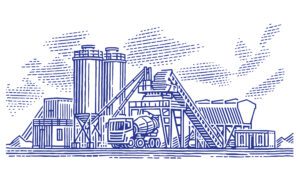Three Trends to Recruit and Retain a Diverse and Skilled Workforce
As industrial companies grapple with the effects of the retiring Baby Boomer workforce, it leaves organizations wondering: What steps should be taken to tackle the skills gap? What actions can companies take to change people’s perception of a career in manufacturing? And what can be done to recruit and retain a new, more diverse generation of tech-savvy employees?
The arrival of COVID-19 this year also has accelerated the adoption of digital technology in manufacturing environments. Manufacturers had to turn to remote operations, which require a completely new approach to work where digital literacy plays a critical role. As production lines pivoted to meet new and unexpected output levels, companies had to adapt quickly and deploy technology to help train or retrain employees – while ensuring worker safety on the plant floor.
In order to dive deeper into this topic, we sat down with a number of industry experts who weighed in on what they’re seeing and how they’re solving this growing workforce issue.
Here are three trends to recruit and retain a diverse and skilled workforce:
1. Filling the Employment Gap
There are currently four generations in the manufacturing workforce: Baby Boomers (which make up the majority of the labor pool), Generation X (ages 40 to 55), Millennials (ages 24 to 39) and Generation Z (ages 18 to 23). As the Baby Boomer generation accelerates its retirement out of the workforce, it’s crucial for companies to recruit and retain talent from succeeding generations; if we continue on our current track, it’s expected that the skills gap will leave 2.4 million jobs unfilled by 2028 in the U.S. alone.
On top of that, average tenure is shrinking. The average tenure of a Baby Boomer is around 15 years; you often hear of 20- and 30-year veterans. As the generations get younger, the length of time people stay at companies has been reduced; Millennials spend an average of two years. This means that for new employees, skills and knowledge need to be developed and transferred within a few months, not a few years.
One way to bridge the employment gap is to understand that Millennials and Gen Z are digital natives. The concept of giving them a 6-inch binder won’t work.
Digitizing SOPs, replacing paper binder and analog-based printouts with smartphones and tablets, training employees via in-the-moment collaboration and multimedia now serve as the tools of choice for the new industrial workforce.
2. How Quickly Can You Adapt While Still Focusing on Human Work?
As companies are now forced by crisis to build resilience, strengthen and diversify their supply systems, having the right people plus the right technology will play a vital role.
There is a lot of discussion around reshoring and nearshoring, which begs the question: How do we attract the right skilled and semi-skilled labor in countries and cities where new manufacturing facilities are planned to open? Not every location will have the same level of talent or resources. Companies must be able to hire talent locally, train them through the use of technology, and bridge the gap between human operations, machines and overseas development.
Despite disruptions to global operations, there were a number of companies that have been able to weather the storm. Within the World Economic Forum Lighthouse Network, there are many companies and leaders around the world driving initiatives and changes. These companies are thriving and they are the frontrunners that implemented technology years ago. Because of that, they’re already seeing operational and financial impact from their digital transformation efforts. Here are three examples from Lighthouse factories:
- A Groupe Renault site in Cleon, France uses a wide range of technology solutions (e.g. cobots and virtual reality) to support operators, eliminate waste, reduce energy consumption and automate repetitive tasks.
- At Haier’s refrigerator factory, it focuses on a user-centric mass customization model. By deploying a digital platform connecting end-to-end with suppliers and users, it’s improved labor productivity by 28%.
- At a fully digitalized 5G Nokia factory in Finland, the company has implemented a number of technology solutions through a private wireless network. As a result, the site has improved productivity by 30%, and brings products to market 50% faster than before.
There are things the global pandemic has introduced, that are here to stay – such as trends in safety, contact tracing and production line efficiency.
The key is how quickly can we adapt and how can we put people at the center and use technology to augment it?
This has become increasingly important in manufacturing. Companies have proven their agility and resilience in light of the global pandemic, digital tools have enhanced a connected workforce, improved productivity and efficiency and provided opportunities for cross-company learning and collaboration.
3. Focus on Change to Attract a Younger and More Diverse Workforce
The third challenge to solve is the misunderstanding and flawed perspective about what manufacturing actually looks like. The media often portrays manufacturing and industrial jobs as outdated, unskilled and manual labor intensive; however, the reality is that manufacturing plants and factories have some of the most advanced technologies in the world, with operators working on tablets and new roles for software engineers, cybersecurity experts and data analysts that previously didn’t exist on the shop floor. And it’s increasingly important for manufacturers to change that perception in order to close the workforce gap, and show that technology is very much at the core of manufacturing and production.
This can easily be overcome by education, like partnering with high school programs and providing hands-on workshops and classes in manufacturing, or working with communities to highlight what goes on in a real factory. This is critical to shifting perceptions of what manufacturing is really like and the role technology plays in daily operations. Exposing young adults early on allows them to have insight and the ability to explore problems they would be interested in solving.
Companies also have a responsibility to create a more diverse workforce; currently, less than 40 percent of the manufacturing workforce are women.
Emphasizing transformational aspects of the industry and the use of digital technology is an opportunity to attract more women to the field. Operational and business agility requires effective change management, which requires high emotional intelligence. Having a diverse workforce will better round out this dynamic.
Lastly, a way to promote retention is to provide the means for mobility within an organization, and if possible, allowing for international mobility. According to a Deloitte survey on the priorities and ambitions of Millennials and Generation Zs, 57 percent said they want to see and travel the world, ahead of earning a high salary The younger generation wants flexibility and they understand the value that comes from working in different roles and locations. Technology is critical to help facilitate these kinds of programs and provide the ability to transfer knowledge and upskill workers. Encouraging these types of exchange programs allows workers to be exposed to different people, different ways of doing things, even different locations – contributing to a diverse workforce.
It’s evident, now more than ever, with the retiring Baby Boomers and the influx of Gen Z workers that manufacturers need to close the workforce gap. There’s a need to not only recruit and upskill new talent, but to also retain a diverse and skilled workforce. They’re the future leaders of tomorrow.






